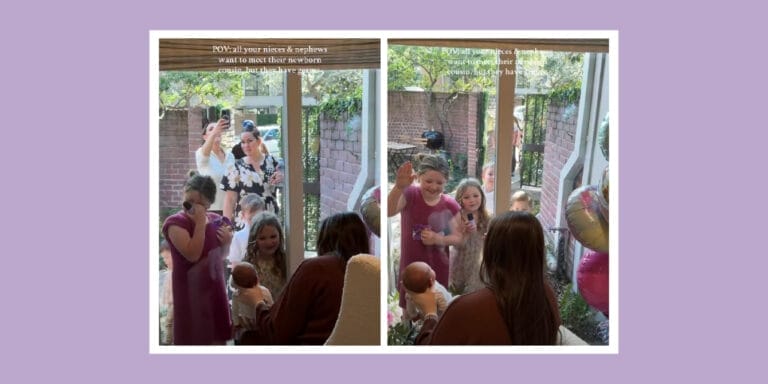There’s a scientific reason Grandmas love their grandkids so much

fizkes/Shutterstock
Research shows how grandmas' brains react to the sight of their grandkids.
It’s no secret that most grandmas are absolutely bananas about their grandbabies. Now one psychologist is showing us exactly what happens inside grandmothers’ brains when grandkids are near—and it’s fascinating.
James Rilling, lead author and professor in Emory’s Department of Anthropology and Department of Psychiatry and Behavioral Sciences at Emory University, scanned the brains of 50 grandmothers while they viewed photos of their young grandchildren.
It’s a rare neural snapshot into the special bond between grandmas and their grandchildren, and it provided very interesting information about their emotions.

“What really jumps out in the data is the activation in areas of the brain associated with emotional empathy,” Rilling tells Emory College’s news center. “That suggests that grandmothers are geared toward feeling what their grandchildren are feeling when they interact with them. If their grandchild is smiling, they’re feeling the child’s joy. And if their grandchild is crying, they’re feeling the child’s pain and distress.”
Just in time for the holidays, proof that grandma does like you best!
— Emory College (@emorycollege) November 19, 2021
Or, at least, she has a stronger emotional connection with her grandkids rather than her kids.
The new study from @AnthroEmory‘s James Rilling: https://t.co/digrl8Q7LZ pic.twitter.com/hIB3ZNJ5jp
When grandmothers viewed photos of their own children—some biological, some not—their brains showed stronger activation in the area associated with cognitive empathy as opposed to emotional empathy.
While cognitive empathy is not absent of emotion, it is more complex, which makes sense given that adult relationships are more cognitively complex than that between a grandparent to grandchild.
“Young children have likely evolved traits to be able to manipulate not just the maternal brain, but the grand maternal brain,” Rilling says. “An adult child doesn’t have the same cute ‘factor,’ so they may not illicit the same emotional response.”
Related: To all the grandparents—we couldn’t do this without you. Thank you
The study authors also noted that the difference in emotional response could be directly related to the freedom grandparents have compared to parents.
“Many of them also said how nice it is to not be under as much time and financial pressure as they were when raising their children,” Rilling says. “They get to enjoy the experience of being a grandmother much more than they did being parents.”
Co-authors of the study are Minwoo Lee, a PhD candidate in Emory’s Department of Anthropology, and Amber Gonzalez, a former Emory research specialist.
“Here, we’re highlighting the brain functions of grandmothers that may play an important role in our social lives and development,” Lee says. “It’s an important aspect of the human experience that has been largely left out of the field of neuroscience.”
Grandmothers interacting with grandchildren offered new neural territory.
Related: Raising children near their grandparents has scientific benefits (besides the free babysitting!)
“Evidence is emerging in neuroscience for a global, parental caregiving system in the brain,” Rilling says. “We wanted to see how grandmothers might fit into that pattern.”
Grandmothers who more strongly activated areas involved with cognitive empathy when viewing pictures of their grandchild reported in the questionnaire that they desired greater involvement in caring for the grandchild.
Because humans are “cooperative breeders,” it means that mothers receive help caring for their offspring—though the means and sources of that help vary from family to family and society to society.
“We often assume that fathers are the most important caregivers next to mothers, but that’s not always true,” Rilling says. “In some cases, grandmothers are the primary helper.”
A version of this article was published November 19, 2021. It has been updated.
































